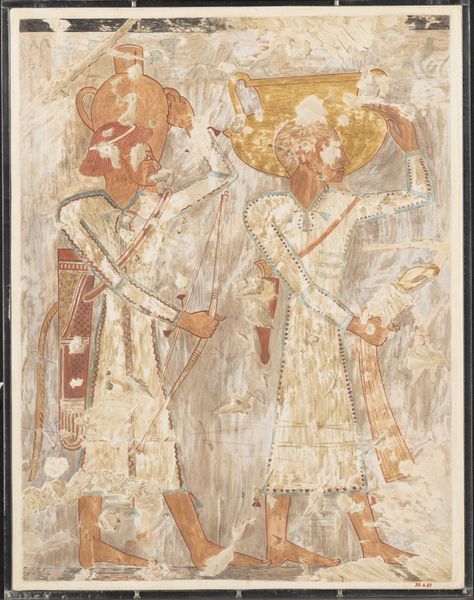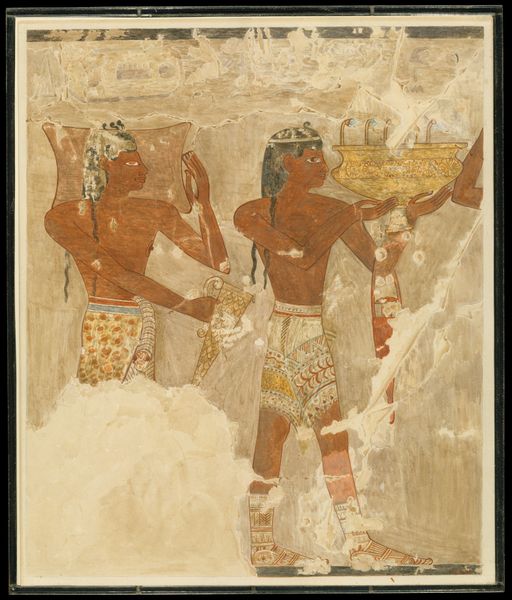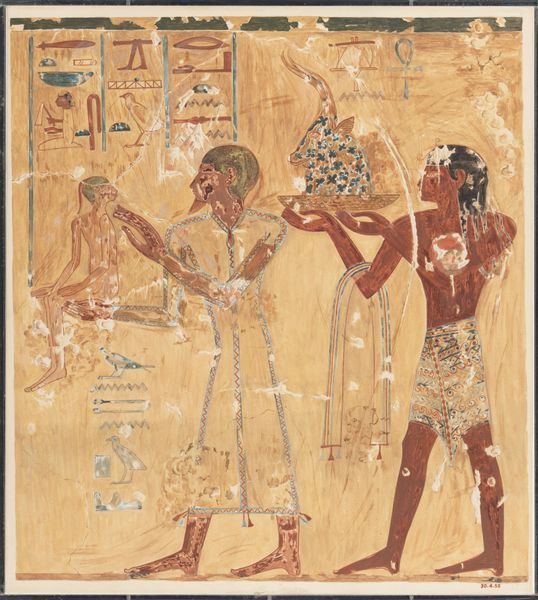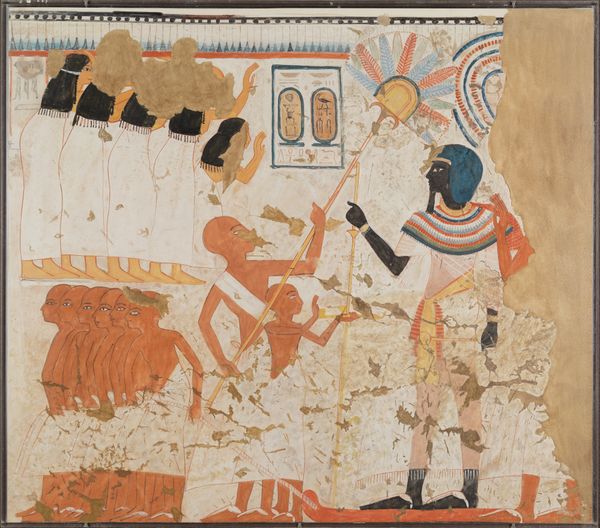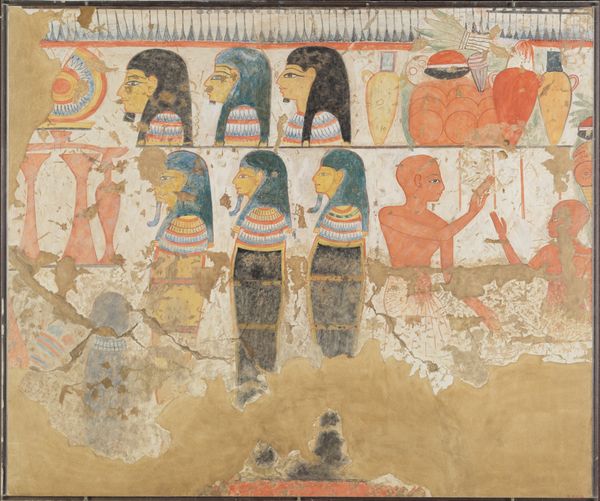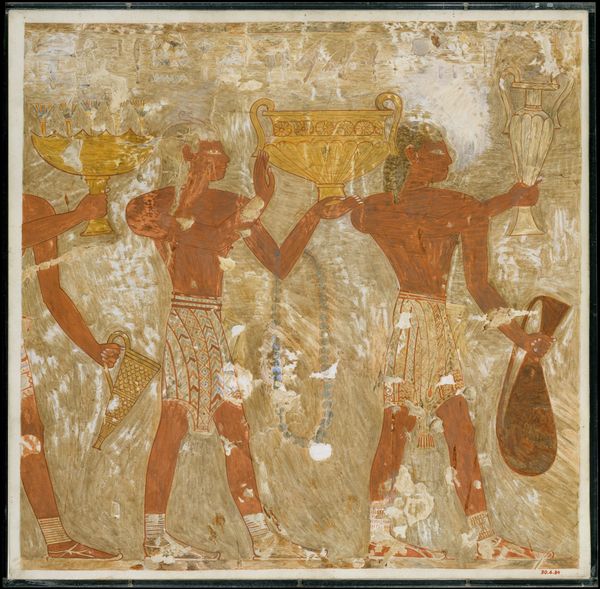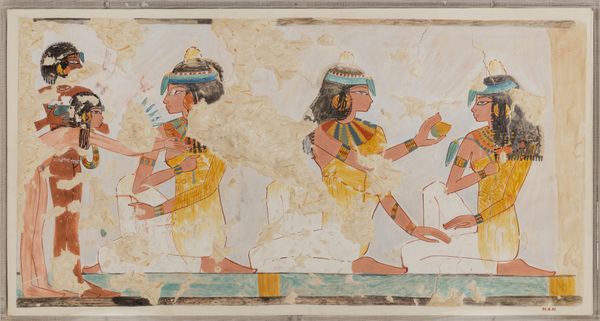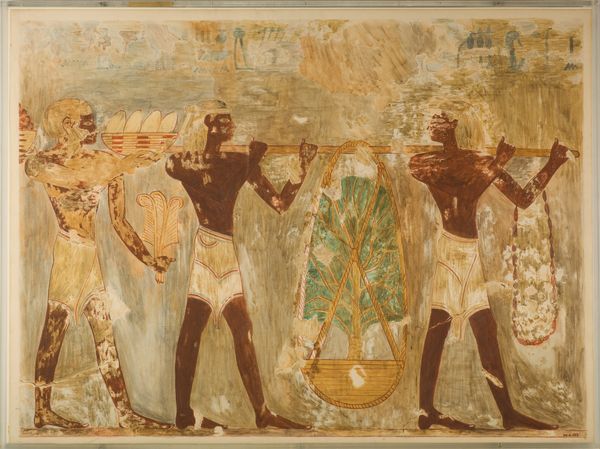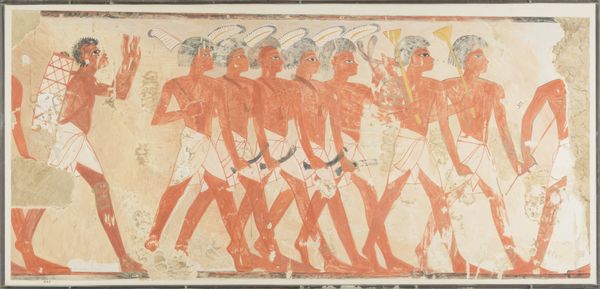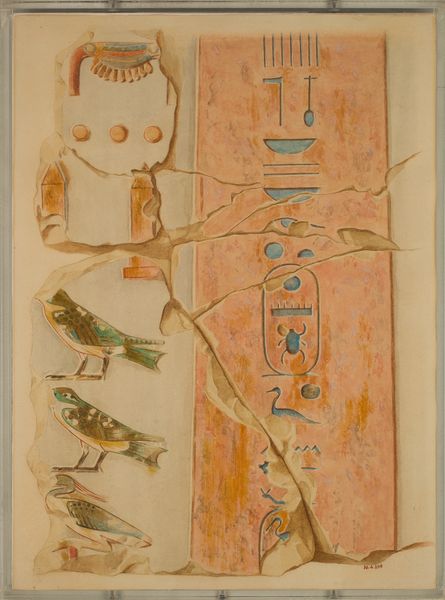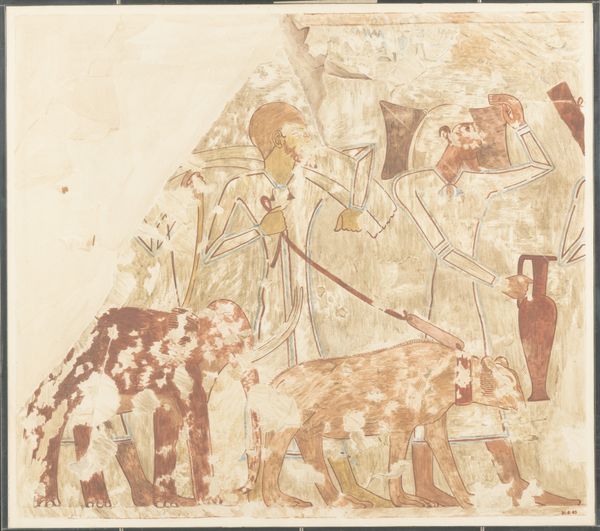
Cretans Bringing Gifts of Metal and Jewelry, Tomb of Rekhmire 1504 BC
0:00
0:00
painting, watercolor
#
water colours
#
narrative-art
#
painting
#
landscape
#
ancient-egyptian-art
#
figuration
#
watercolor
#
egypt
#
ancient-mediterranean
#
history-painting
Dimensions: H. 45 cm (17 11/16 in); w. 42 cm (16 9/16 in) framed: h. 48.3 cm (19 in); w. 45.4 cm (17 7/8 in)
Copyright: Public Domain
Curator: Here we have Nina de Garis Davies' watercolor reproduction, "Cretans Bringing Gifts of Metal and Jewelry, Tomb of Rekhmire," dating back to 1504 BC. It's currently housed at the Metropolitan Museum of Art. Quite a stunning example of early Egypt, don't you think? Editor: Stunning, yes, but I'm struck first by how contemporary it feels. I mean, there's almost a fashion show vibe here. The poses, the accessories… those tiny sandals! They’re parading, strutting—are these ancient influencers? Curator: Well, in a way, yes. The original was part of a larger wall painting meant to showcase Rekhmire, a high-ranking official. It depicts foreigners bringing tribute, underscoring Egypt’s power. These Cretans specifically bring gifts, implying trade relationships and Egypt's dominance in material exchange. Notice how the rendering of bodies emphasizes muscle, a signal of labour power? Editor: Oh, totally. But those beautifully rendered gifts too. That golden vase...it catches the eye, and dangles with what appears to be lapis and carnelian. I wonder how heavy those gifts actually were! I mean, were these workers proud of what they were bringing, or were they just exhausted? Curator: A fair question. Davies made this watercolor copy in the early 20th century, a time of great archeological exploration. She worked methodically, carefully documenting the tomb's details. Look at her use of color, simulating the pigments originally derived from minerals, charcoal and plants. Editor: Which now appear muted…faded under the dessert sun. I can almost feel the grit and the heat just by looking at it. It is funny that she chose watercolor however, since watercolor is pretty fragile in its own right. Was she trying to emphasize a fleeting, human temporality of ancient cultural achievement? Curator: Interesting! More practically, watercolor allowed for relatively quick, accurate documentation. These replicas were also vital for scholars unable to visit the actual sites. The original wall paintings would be exposed to outside elements once excavated. This gives these renderings a very crucial afterlife. Editor: Well, the work gives the modern viewer insight into the artistic values and social systems that existed so long ago. Curator: And to the methods by which knowledge about that time and culture were mediated to audiences across the world. A beautiful example of how art is both produced by and productive of complex historical and cultural relationships. Editor: Right, almost like its own kind of tribute to human connection itself!
Comments
No comments
Be the first to comment and join the conversation on the ultimate creative platform.

